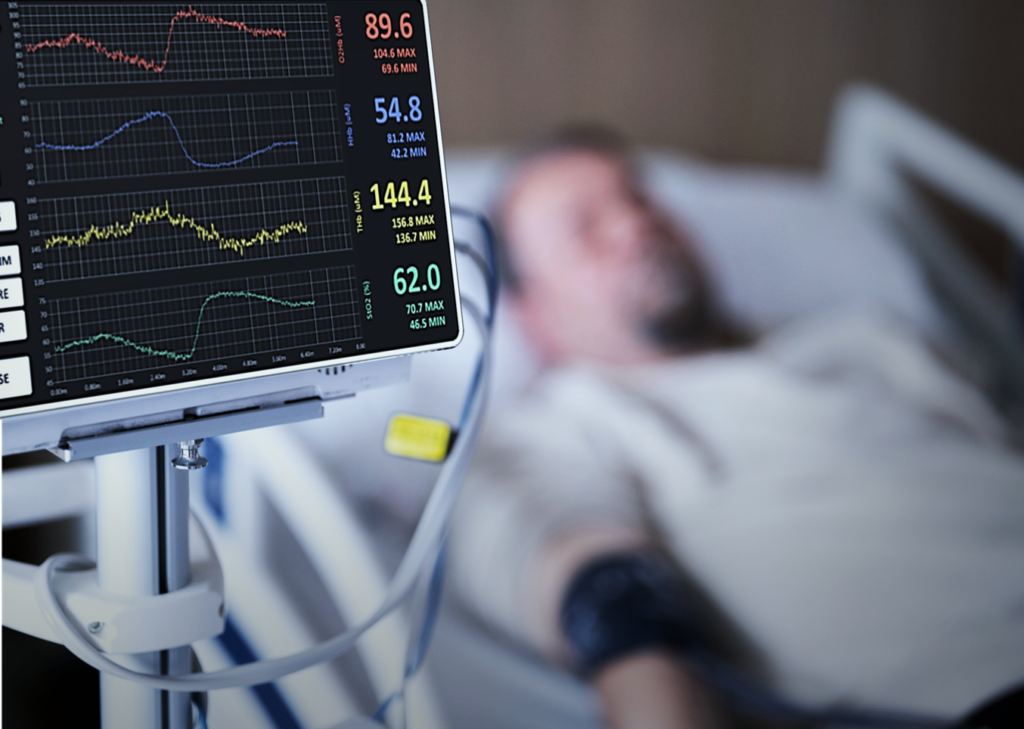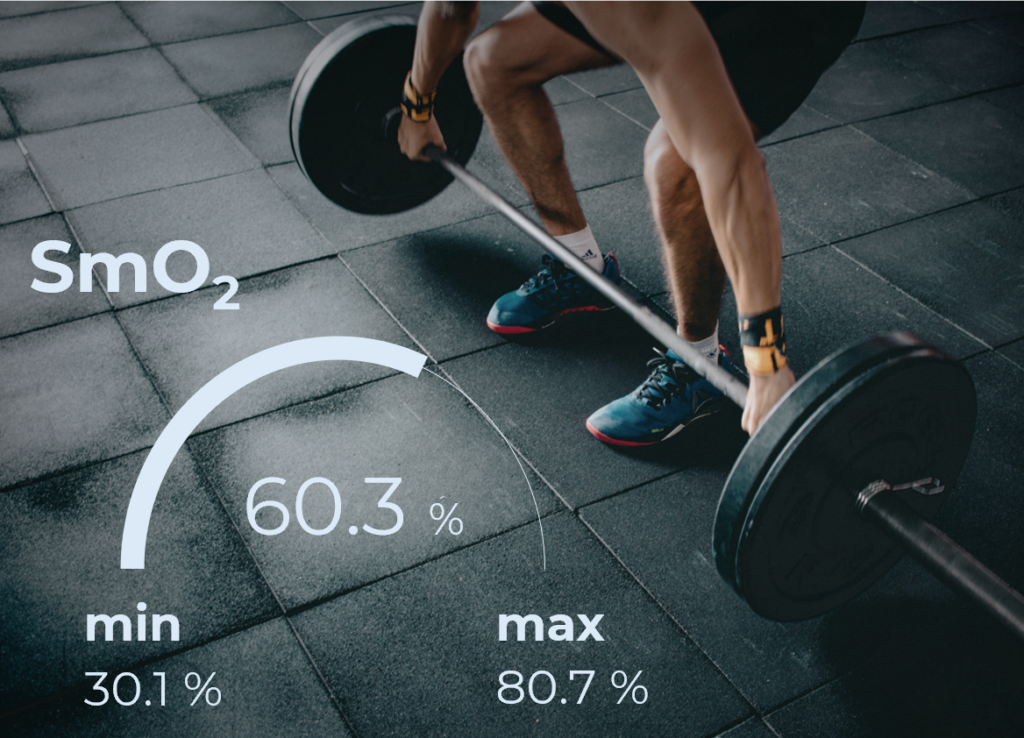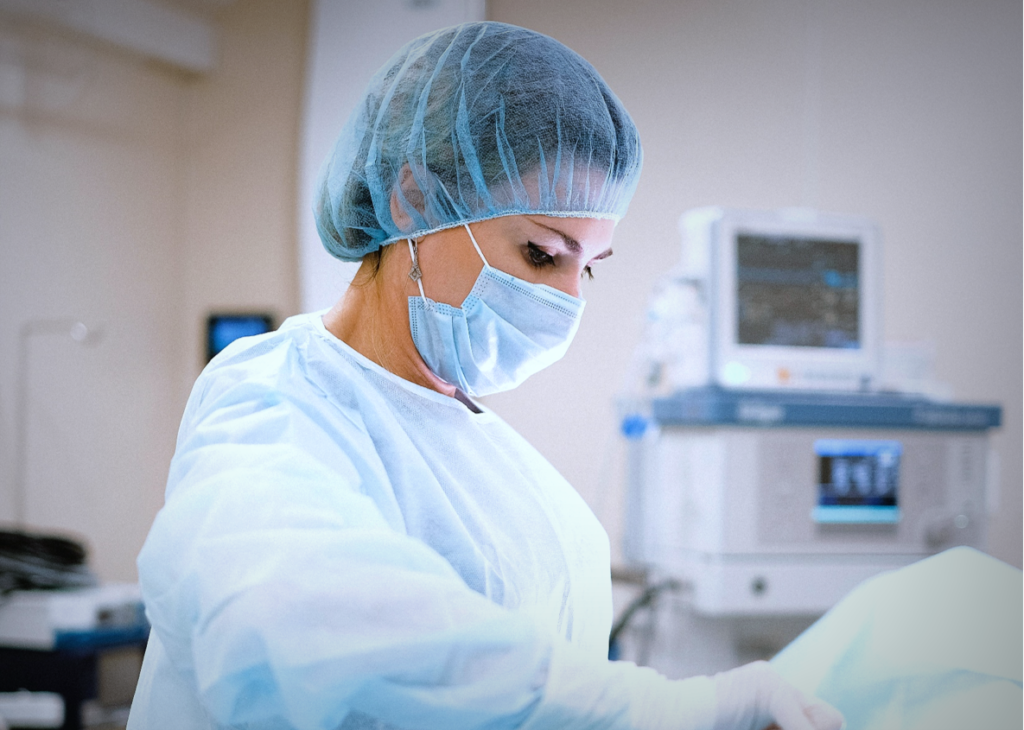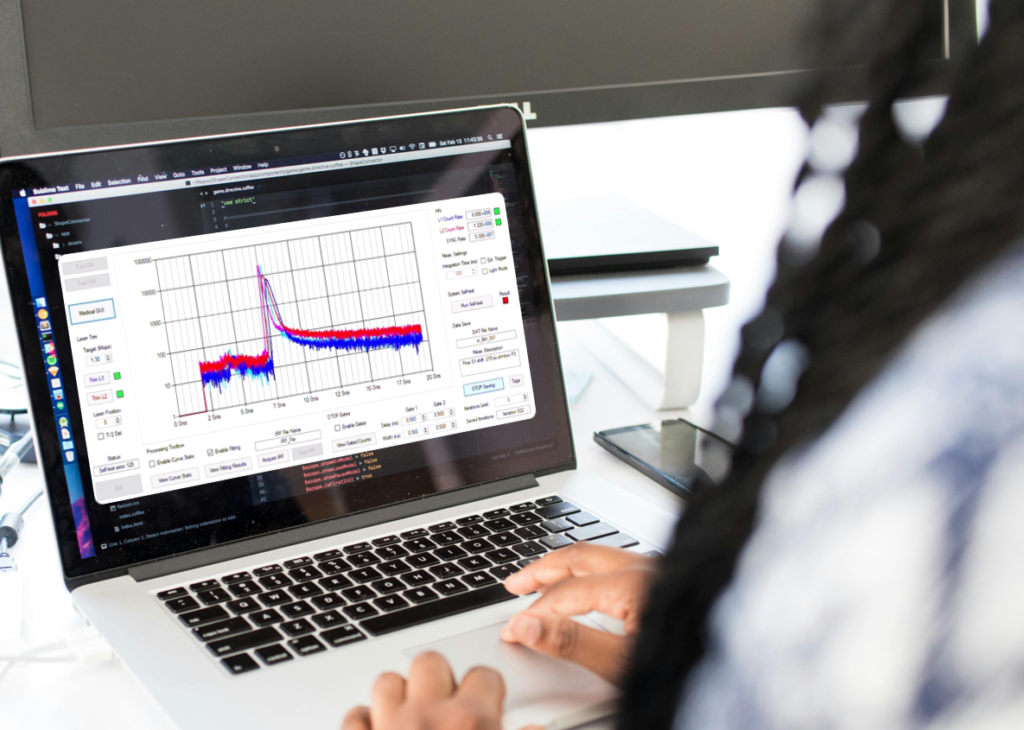


Add a new dimension to NIRS
Quantitative tissue oximetry without a-priori assumptions and unprecedented reproducibility
PIONIRS devices
- Absolute oximetry values
- No a-priori assumptions
- No calibration needed
- Insensitive to superficial layer, designed for patient diversity
- High reproducibility (possibility to compare data across different days)
- High rejection of motion artifact, measurements depend on laser’s temporal shape not intensity
Other devices
- Only relative changes
- A-priori assumptions on venous vs arterial blood contribution and DPF
- Calibration needed
- Superficial layer can affect the measurements
- Low reproducibility, highly dependent to probe repositioning
- Measurements highly dependent to intensity variations hence, motion
Discover the applications
Clinical research
Our regional tissue oximeter is tailored to for the dynamic environments of Operating Rooms (OR) and Intensive Care Units (ICU). Designed to follow the patient through every phase of care – from pre-operative to post-operative – it ensures unwavering support for patients of all ages, from the most fragile population to adult subjects.

- Cerebral and somatic oximetry
- Endothelial health assessment
- Long-term monitoring
- Intra-subject and longitudinal comparison
- Acute respiratory distress syndrome bed-side monitoring
- Suitable for rehabilitation procedures
Selected publications
The study aimed to establish reference ranges for cerebral and mid-upper arm (MUA) tissue haemodynamics in paediatric subjects using TD-NIRS and explore correlations with auxological variables.
Acta Paediatrica
00:1–11, October 2024
Neurophotonics
Vol. 11, Issue 4, November 2024
In the framework of the VASCOVID project, detection of the levels of impairment in microvascular oxygen consumption and reactive hyperemia in ICU patients.
JoVE Journal, Medicine
May, 2024
NIRSBOX on quantitative fNIRS: motor cortex response to goal-oriented and not goal-oriented tasks.
Frontiers in Neuroscience
Vol. 17, July 2023
Our NIRSBOX device in a study on motor cortex hemodynamics monitoring in freely walking healty subjects.
Neurophotonics
8(1), 015006, February 2021
Sport science
The accurate assesssment of muscle oxygenation and oxygen consumption is pivotal in understanding athletic performance and physiological adaptations. Our advanced monitoring technology provides precise measurements of deoxygenated hemoglobin (HHbMb), oxygenated hemoglobin (HbMbO2), total hemoglobin (HbMbtot), and muscle oxygen saturation (SmO2), enabling comprehensive evaluation of local muscle oxygen consumption.

- Accurate HHbMb, HbMbO2, HbMbtot and SmO2 assessment
- Track performances over time
- Cardiopulmonary assessment, insight into muscle metabolism and oxygen consumption
- Direct evaluation of differential pathlength factor (DPF) and correlation with adipose tissue thickness (ATT)
- Reliable intra-subject measurements and longitudinal comparisons
Selected publications
Example of TD-NIRS applied to muscle fatigue assessment during isometric exercises.
Biomedical Optics Express
Vol. 11, Issue 12, December 2020
In the framework of the VASCOVID project, assessment of very low (VLF) and low-frequency (LF) oscillations related to myogenic, neurogenic and endothelial activities.
Biomedical Optics Express
Vol. 14, Issue 11, October 2023
Scientific research
No more complex TD-NIRS devices. Our compact and plug-and-play TD-NIRS system, and the PIONIRS team will help pushing the boundaries of your research, achieving new levels of precision and accuracy. Easily integrate it with your existing setup. Whether your focus is on medical research, veterinary science, sports or any other field, our customizable solutions are designed to support and level-up your projects.
Contact us today to discuss how we can tailor our technology to meet your specific research needs.

- Tissue characterization spectroscopy (ex-vivo and in-vivo organs)
- Identification of different chromophores (water content, cytochrome c-oxydase, …)
- Aging and Muscular / Cerebral physiology
- Clinical veterinary application
- Food quality and agritech
Selected publications
Performance and reproducibility assessment across multiple NIRSBOX device replicas.
Proceedings Volume 11951, 2022
Our findings consistently demonstrate that skin pigmentation has a negligible effect on time-domain near-infrared spectroscopy results.
Biomedical Optics Express
Vol. 16, pp. 690-708, January 2025
Full characterization of a fast and multi-distance TD-NIRS + DCS device integrated with NIRSBOX-OEM device for clinical applications.
Sensors
24(22), 7375, November 2024
Multi-distance DCS device integrated with NIRSBOX-OEM device to monitor blood flow, tissue oxygenation, and oxygen metabolic rate.
Sensors
21(3), January 2021
Non-invasive estimation of in vivo optical properties and hemodynamic parameters of domestic animals (horses, dogs, and sheep).
Frontiers Veterinary Science
Vol. 10, September 2023
